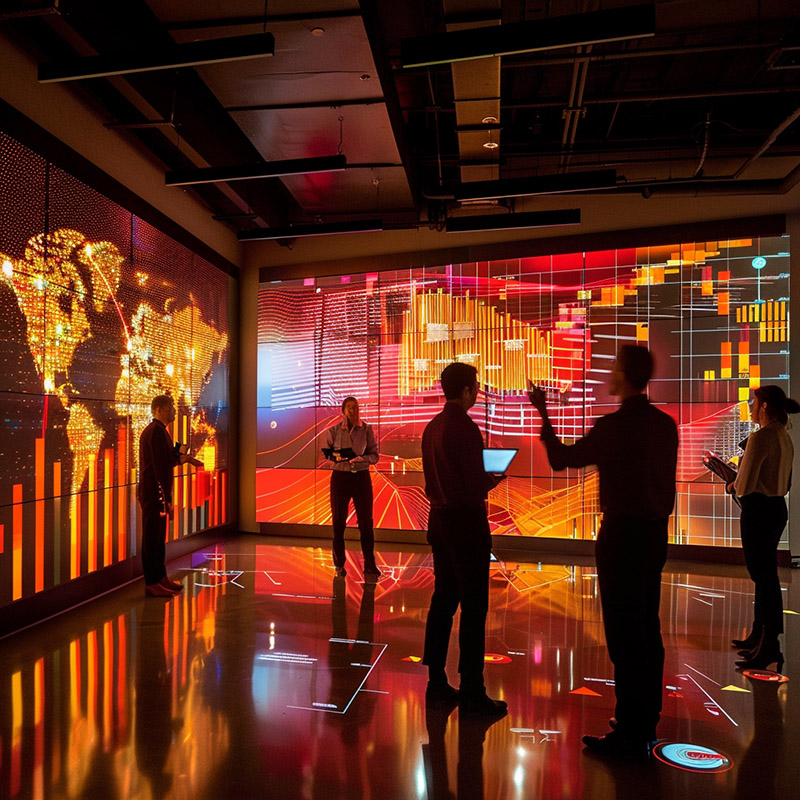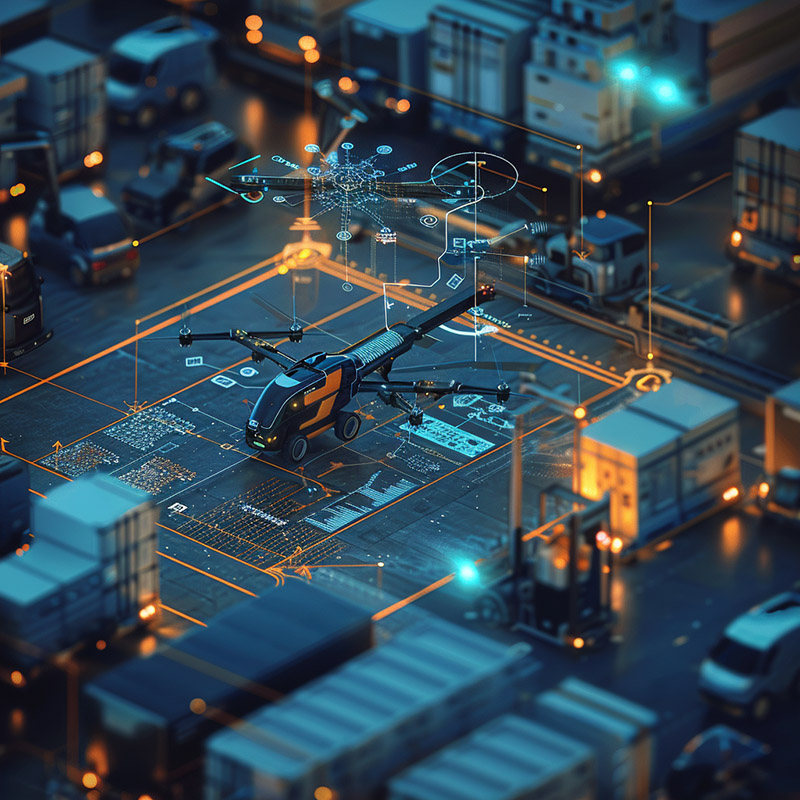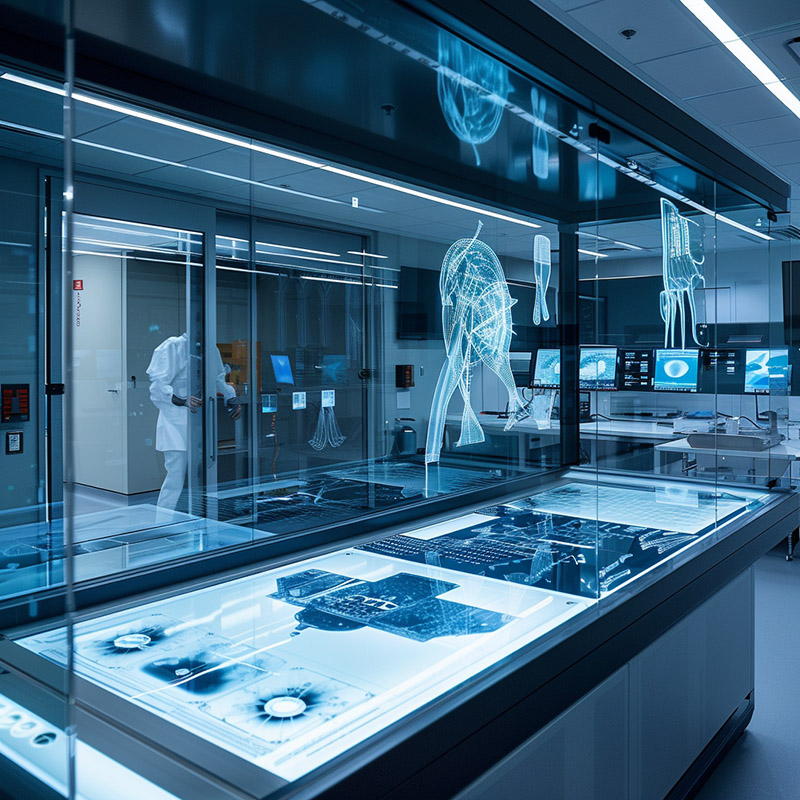1. Automated Customer Service
AI chatbots and virtual assistants can handle a wide range of customer inquiries 24/7, from answering FAQs to processing orders, significantly improving response times and customer satisfaction while reducing the workload on human staff.

Customer Service Before AI
Customer service operations were often bottlenecked by high volumes of inquiries, leading to long wait times and frustrated customers. Human agents, limited by the number of calls or messages they could handle simultaneously, struggled to provide timely and personalized responses, impacting customer satisfaction and loyalty.
Customer Service After AI
With AI-powered automated customer service, businesses can offer 24/7 support, instantly responding to customer inquiries, orders, and issues without delay. AI chatbots and virtual assistants handle multiple interactions simultaneously, providing personalized and accurate assistance. This not only improves customer satisfaction and engagement but also allows human agents to focus on more complex customer needs, enhancing overall service quality.
2. Enhanced Data Analysis and Decision Making
AI algorithms can sift through vast amounts of data to identify trends, predict customer behavior, and inform strategic decisions. This enables businesses to tailor their offerings, optimize operations, and stay ahead of market trends.

Decision Making Before AI
Decision-making processes were often constrained by the limited ability to process and analyze the vast amounts of data businesses collected. Insights were slow to emerge, and opportunities could be missed, resulting in strategies that were reactive rather than proactive, potentially leading to suboptimal business outcomes.
Decision Making After AI
AI's capability to rapidly analyze big data transforms decision-making into a dynamic, informed process. Businesses can now leverage real-time insights to predict market trends, understand customer behavior, and make strategic decisions with confidence. This shift enables proactive strategy adjustments, optimizing operations and driving targeted initiatives that capitalize on emerging opportunities, significantly improving business agility and competitive advantage.
3. Personalized Marketing and Recommendations
By analyzing individual customer data, AI can personalize marketing messages and product recommendations, improving engagement rates and conversion by delivering content that is more relevant to each customer's interests and behaviors.

Marketing Before AI
Marketing efforts were often broad and generic, failing to engage customers at a personal level. This one-size-fits-all approach led to lower engagement rates, as content and product recommendations did not resonate with individual preferences, resulting in missed sales opportunities and customer disengagement.
Marketing After AI
AI-driven personalized marketing allows businesses to tailor their messaging and recommendations to individual customer preferences and behaviors, significantly increasing engagement and conversion rates. Customers receive content and product suggestions that are relevant to their interests, enhancing the shopping experience and fostering loyalty. This targeted approach maximizes marketing effectiveness and boosts sales by delivering more value to the customer.
4. Supply Chain Optimization
AI can predict demand, optimize inventory levels, and identify the most efficient delivery routes, reducing costs and improving supply chain reliability. This leads to more efficient operations and better alignment of supply with demand.

Supply Chain Before AI
Supply chains were plagued by inefficiencies, such as overstocking, understocking, and delays, due to the lack of real-time data and predictive insights. This resulted in higher costs, wasted resources, and unsatisfied customers, impacting business operations and profitability.
Supply Chain After AI
AI enhances supply chain management by predicting demand, optimizing inventory levels, and identifying the most efficient delivery routes. This leads to significant cost savings, reduced waste, and improved customer satisfaction through timely deliveries. Businesses can now adapt to market changes more quickly, ensuring that supply always meets demand in the most efficient manner possible.
5. Predictive Maintenance
In manufacturing and operations, AI can predict when equipment is likely to fail or require maintenance, scheduling interventions proactively to minimize downtime and extend the lifespan of machinery.

Maintenance Before AI
Maintenance schedules for equipment were often based on fixed intervals or reactive to breakdowns, leading to unnecessary downtime and unexpected costs. This approach was inefficient and could unexpectedly disrupt operations, affecting productivity and profitability.
Maintenance After AI
Implementing AI for predictive maintenance transforms equipment management by forecasting when maintenance is needed before a breakdown occurs. This proactive approach minimizes downtime, extends equipment life, and reduces maintenance costs, ensuring that operations run smoothly and efficiently, significantly enhancing operational reliability.
6. Fraud Detection and Security
AI systems can monitor transactions and communications for signs of fraudulent activity, significantly improving the speed and accuracy of fraud detection while enhancing overall security measures for businesses.

Fraud Detection Before AI
Fraud detection relied heavily on rule-based systems that could be slow to adapt to new fraud patterns, resulting in a higher rate of successful fraud attempts and financial losses. Security teams struggled to keep pace with the sophistication of modern fraud techniques, leaving businesses vulnerable.
Fraud Detection After AI
AI revolutionizes fraud detection by continuously learning and adapting to new fraud patterns, significantly improving the speed and accuracy of fraud identification. This dynamic approach allows businesses to stay ahead of fraudsters, reducing financial losses and enhancing customer trust. AI's real-time monitoring and predictive capabilities ensure a more secure environment for transactions and data.
7. Human Resources and Talent Management
AI can streamline the recruitment process by analyzing resumes and identifying the best candidates, assist in onboarding, and personalize training programs to improve employee skills and satisfaction.

Human Resources Before AI
The recruitment process was time-consuming and often subjective, leading to potential mismatches between candidates and job requirements. Human resources teams faced challenges in efficiently managing talent, from recruitment to retention, impacting overall workforce productivity and satisfaction.
Human Resources After AI
AI streamlines HR processes, from automating resume screening to identifying the best candidates based on skills and cultural fit, significantly reducing the time and effort involved in recruitment. Personalized training and career development plans, guided by AI, improve employee engagement and retention, ensuring that businesses can effectively manage and develop their talent pool, optimizing workforce potential.
8. Financial Management and Forecasting
AI tools can automate financial processes, such as invoicing and expense tracking, and provide more accurate financial forecasting by analyzing trends and market conditions, aiding in more strategic financial planning.

Finance Before AI
Financial planning and analysis were often hampered by manual data aggregation and analysis, leading to slower decision-making and potential inaccuracies in forecasting. This could result in missed opportunities and financial missteps, affecting a business's strategic direction and growth potential.
Finance After AI
AI-driven financial management tools automate data processing and provide accurate, real-time financial insights, enabling more strategic financial planning and forecasting. Businesses can identify trends, predict future financial performance, and make informed decisions quickly, improving financial health and strategic agility.
9. Enhanced Research and Development
AI can accelerate the R&D process by quickly analyzing scientific literature, simulating experiments, and predicting the potential success of new products, reducing the time and cost of bringing new innovations to market.

Research and Development Before AI
The R&D process was slow and resource-intensive, with a high degree of uncertainty regarding the outcome of new projects. This could lead to prolonged development times and higher costs, impacting a business's ability to innovate and bring new products to market competitively.
Research and Development After AI
AI accelerates the R&D process by quickly analyzing scientific literature, simulating experiments, and predicting the success of new products, reducing both time and costs associated with development. This enables businesses to innovate more rapidly and efficiently, bringing new, successful products to market faster and more reliably, thereby maintaining a competitive edge.
10. Workplace Productivity Tools
AI-powered tools can assist employees with scheduling, email management, and task prioritization, improving overall productivity by reducing the time spent on administrative tasks and enabling a focus on more strategic activities.

Productivity Before AI
Employees often spent a significant portion of their time on administrative tasks such as scheduling, email management, and task prioritization, reducing the time available for strategic and creative work. This inefficiency could impact overall productivity and job satisfaction.
Productivity After AI
AI-powered workplace productivity tools automate routine tasks, from managing emails to scheduling meetings, freeing employees to focus on higher-value activities. These tools also provide personalized task prioritization, enhancing individual productivity and enabling teams to achieve more in less time, improving job satisfaction and business outcomes.